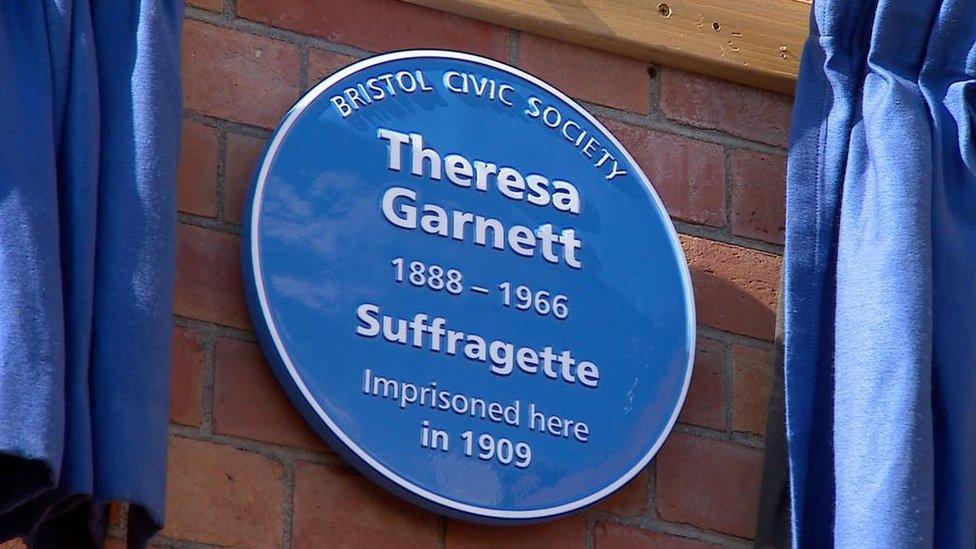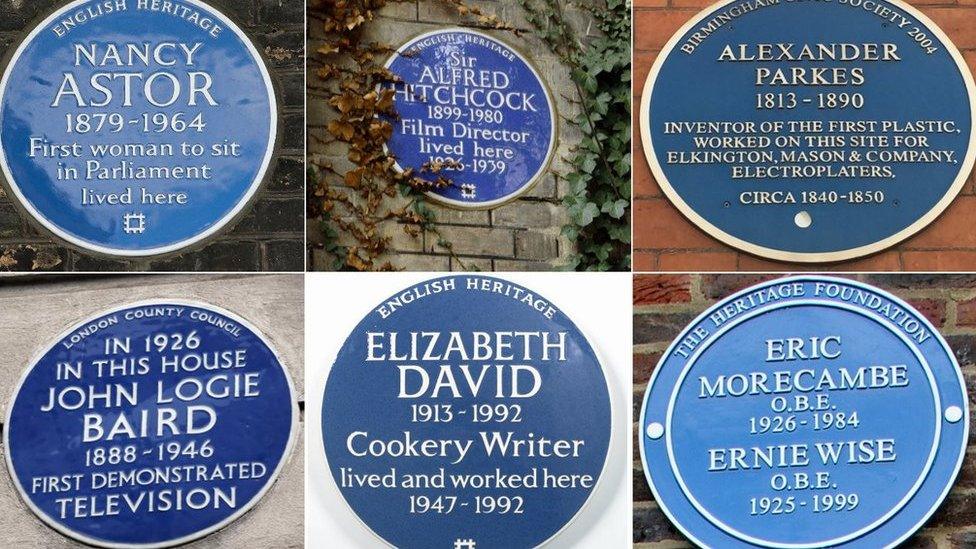HMP Horfield blue plaque to suffragette unveiled
- Published

The blue plaque was put up by the Bristol Civic Society in honour of suffragette Theresa Garnett who was sentenced to one month inside HMP Horfield in 1909
A suffragette who was jailed in 1909 after attacking Winston Churchill with a whip is being commemorated.
Theresa Garnett carried out the assault at Bristol Temple Meads railway station and was jailed at nearby Horfield.
Earlier a blue plaque was unveiled as part of an art project to explore the history of the suffragettes who were imprisoned there.
It is thought to be the only blue plaque that has been placed in a working prison.
During the attack it is reported that she said "take that in the name of the insulted women of England".
She was involved in a number of protests but this attack on the former prime minster was her most notorious act for which she was sentenced to one month inside HMP Horfield.
Lori Streich from the Bristol Civic Society, who commissioned the plaque, said: "She was fascinating, very very brave and courageous and very committed to achieving rights for women which is something I think we can all support now.

Theresa Garnett was one of five suffragettes imprisoned at HMP Horfield, known as The Horfield Five
"Blue plaques, external tell history, they tell stories from Bristol's history and and the Bristol Civic Society's blue plaques panel is very keen to diversify the stories that we tell."
Ms Garnett was one of five suffragettes who were imprisoned and later known as The Horfield Five.
The plaque, which is visible to the public from Cambridge Road but within the prison walls, is connected to an education project which is using art to explore this history.
It has been led by Emma Lilwall, artist and fine art lecturer from Weston College's prison-based Education Department, external, who has been working with male prisoners to explore suffrage and women's rights.
"It explored lots of issues relevant for women at the moment and also through history, so we've connected the past with the present," said Ms Lilwall.

The blue plaque is connected to an education project using art to explore history
A large mural has also been created on the walls outside the prison as part of the project.

Follow BBC West on Facebook, external, Twitter, external and Instagram, external. Send your story ideas to: bristol@bbc.co.uk , external
Related topics
- Published16 September 2021

- Published29 May 2016
